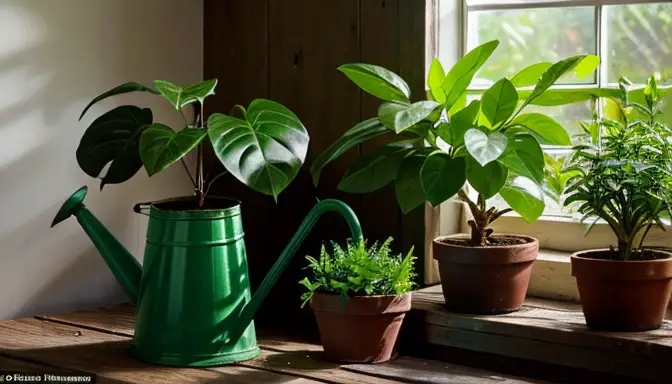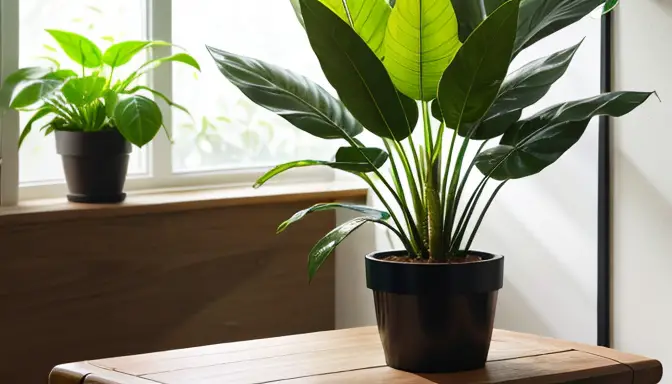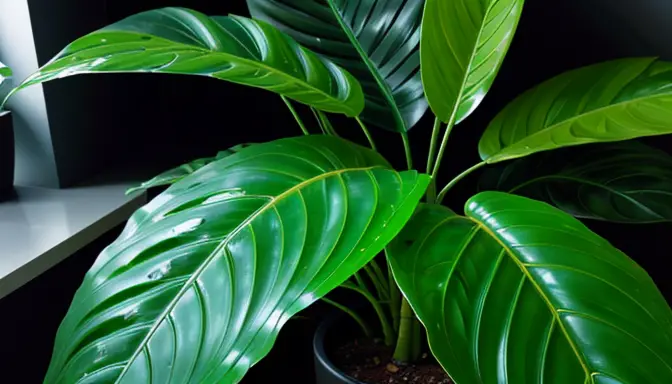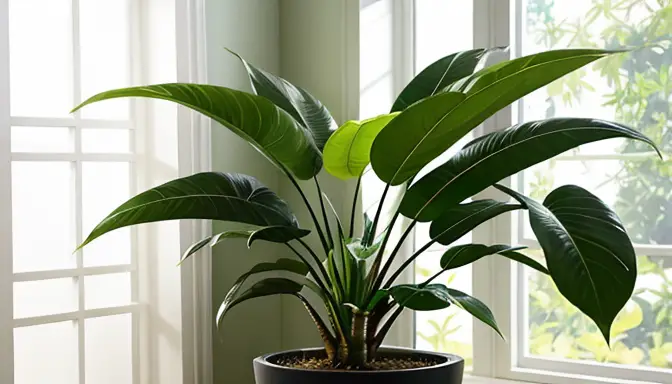ZZ plants are renowned for their resilience and ability to thrive in low-light conditions, making them a popular choice for indoor plant enthusiasts. But have you ever wondered how long these hardy plants can survive without water? Let’s delve into the watering needs of ZZ plants and uncover the secrets to keeping them healthy and vibrant.
Understanding ZZ Plants
ZZ plants, also known as Zamioculcas Zamiifolia, are beloved for their striking appearance and hardy nature. These plants have thick, succulent-like leaves that store water, making them incredibly resilient to drought conditions. Hailing from Eastern Africa, ZZ plants thrive in arid environments where water may be scarce. This natural adaptation allows ZZ plants to survive extended periods without water, making them an ideal choice for busy plant owners or those prone to forgetfulness.
When it comes to caring for ZZ plants, understanding their unique characteristics is key. These plants prefer to dry out between waterings, as overwatering can lead to root rot. Their ability to store water in their rhizomes enables them to withstand neglect and occasional underwatering, making them a low-maintenance addition to any indoor space.

Watering Frequency
When it comes to watering your ZZ plant, getting the frequency right is crucial for its health and growth. Factors such as season, temperature, and pot size play a significant role in determining how often your ZZ plant needs watering. Finding the perfect balance is key to preventing issues like root rot or dehydration.
To help you navigate the watering needs of your ZZ plant, here are some tips to consider:
- Monitor the soil moisture regularly to gauge when your ZZ plant needs watering.
- During the growing season in spring and summer, ZZ plants may require more frequent watering compared to the dormant season in fall and winter.
- Consider the size of your ZZ plant’s pot; smaller pots may dry out faster and require more frequent watering.
- Adjust your watering frequency based on the temperature and humidity levels in your home.
By understanding the watering frequency that works best for your ZZ plant, you can ensure that it thrives and remains healthy throughout the year.
Signs of Dehydration
When it comes to ZZ plants, recognizing the signs of dehydration is crucial in maintaining their health and vitality. Dehydration in ZZ plants can manifest in various ways, providing important visual cues for plant owners to take action. Here are some common signs to watch out for:
- Yellowing leaves: One of the most noticeable signs of dehydration in ZZ plants is the yellowing of leaves. This discoloration is a clear indicator that the plant is lacking sufficient water.
- Drooping stems: Dehydrated ZZ plants often exhibit drooping stems, indicating a lack of turgidity due to water loss. This can give the plant a wilted appearance.
- Dry soil: Checking the soil moisture is essential in identifying dehydration. Dry soil that feels parched to the touch is a sign that the ZZ plant needs watering.
By closely monitoring these symptoms, plant owners can intervene promptly to address dehydration issues and prevent further damage to their ZZ plants. Understanding these signs allows for timely intervention and proper care to revive the plant back to health.

Watering Techniques
When it comes to watering your ZZ plant, employing the right techniques is crucial for its overall health and well-being.
This involves thoroughly watering the plant until water drains out of the bottom of the pot, allowing the roots to absorb moisture. Then, allow the soil to dry out completely before watering again. This technique mimics the plant’s natural habitat, preventing waterlogging and promoting healthy root growth.One effective watering method for ZZ plants is the soak and dry technique..
Another use
ful watering technique for ZZ plants is bottom watering. By placing the plant pot in a shallow container filled with water, the roots can absorb moisture from the bottom up. This method helps prevent overwatering and ensures that the plant receives adequate hydration without the risk of water stagnation in the soil.Extended Watering Breaks
When it comes to giving your ZZ plant an extended watering break, preparation is key. Just like a well-oiled machine needs maintenance to keep running smoothly, your ZZ plant requires some groundwork before you can step away from the watering can. Here are some strategies to ensure your ZZ plant stays happy and healthy even during prolonged periods without water:
- Deep Watering: Before your extended absence, give your ZZ plant a thorough watering session to ensure its roots are adequately hydrated. This will help it withstand the dry spell ahead.
- Choose the Right Pot: Opt for a pot with good drainage to prevent waterlogging during your absence. Excess water can be just as harmful as dehydration for your ZZ plant.
- Consider Self-Watering Systems: If you anticipate being away for an extended period, investing in a self-watering system can provide a consistent water supply for your ZZ plant.
- Place in a Shaded Area: Position your ZZ plant in a spot with indirect sunlight to reduce water loss through evaporation. This can help prolong the time it can go without water.

Reviving Overwatered ZZ Plants
Overwatering ZZ plants can lead to various issues like root rot and fungal infections, impacting the plant’s health. To revive an overwatered ZZ plant, the first step is to assess the extent of the damage. Check the roots for any signs of rot or mushiness. If the roots are affected, gently trim off the damaged parts to prevent further spread.
Next, repot the ZZ plant in fresh, well-draining soil to promote better aeration and drainage.
Allow the plant to dry out slightly between waterings to prevent overwatering in the future.Ensure the new pot has drainage holes to prevent water from accumulating at the bottom..
Provide pro
per light and temperature conditions for the ZZ plant to aid in its recovery. Avoid placing the plant in direct sunlight immediately after repotting, as it may stress the plant further. Gradually introduce it to more light as it regains strength.Consider using a root stimulant or mild fertilizer to support the ZZ plant’s recovery process. However, avoid overfertilizing, as this can exacerbate the plant’s stress. Monitor the plant closely for any changes in its condition and adjust care practices accordingly.
Seasonal Watering Adjustments
When it comes to seasonal watering adjustments for ZZ plants, it’s crucial to understand the impact of changing weather conditions on their water requirements. Just like us, ZZ plants have different needs based on the time of year. During the warmer months, when the plant is actively growing, it may require more frequent watering to support its growth and hydration needs. On the other hand, in the colder months or during periods of dormancy, ZZ plants may need less water as their growth slows down.
ear:both; margin-top:0em; margin-bottom:1em;">
